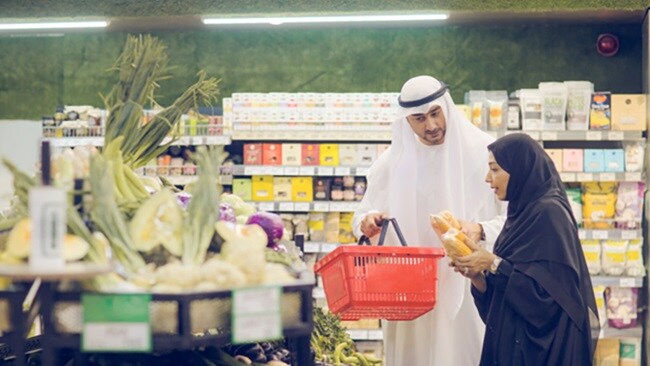Asia is well known for its might in global production, but it is also rapidly becoming the world’s largest consumer market due to a large and growing middle class. This shift is altering consumption patterns and logistics requirements both within and beyond Asia.
Intra-Asia trade is currently one of the largest trades in the world. According to the International Monetary Fund, intra-regional trade in Asia has increased by 43% over the past four decades, and today, more than half of Asian trade is regional.
Growth drivers for this dynamic trade
The increasing fragmentation of trade, largely driven by businesses’ goals to diversify operations and sourcing to mitigate risks and build more robust supply chains, is contributing to the strong growth in the movement of raw materials and semi-finished goods within the region.
Free trade agreements (FTA) such as the Regional Comprehensive Economic Partnership (RCEP) and the China-ASEAN Free Trade Area (CAFTA) 3.0, are also promoting more trade flows by reducing tariffs and trade barriers and opening new markets for businesses operating in Asia.
Correspondingly, port infrastructure is developing at a rapid pace in countries such as Vietnam, Thailand and Indonesia. Governments and private companies are investing to expand the capacity and efficiency of ports so they can handle increasing cargo volumes and calls by bigger-sized vessels. Earlier in the year, the Hateco Haiphong International Container Terminal was officially opened in northern Vietnam, a new deepwater port that can handle mega vessel services of up to 18,000 TEU.
Standing out in a highly competitive landscape
According to Alphaliner, shipping in the intra-Asian market is highly competitive, with at least 69 active players, and container capacity in the region has increased by 13% last year, reaching 2.4 million TEU. In response to customers’ growing demand, Maersk has increased capacity deployed on this trade.
In spite of the continued growth potential, Asia is a challenging market to navigate. Intra-Asia trade is notably more complex, driven by fragmented trade flows, and where small and medium-sized enterprises (SMEs) dominate the landscape. These SMEs, which often face more complex logistics challenges than larger firms, rely heavily on freight forwarders as a means of simplifying their operations.
The intra-Asia trade is to a large extent focused on shipping and dominated by freight forwarders, which focus on price and speed of their offerings. The strength of Maersk’s value proposition lies in our ability to provide tailored integrated logistics solutions to customers across ocean transport, landside logistics, warehousing, and end-to-end supply chain management, which provide customers with greater flexibility and efficiency.
To that end, Maersk is strengthening inland connectivity through expanded cross-border trucking corridors including China–Vietnam, Thailand–Malaysia–Singapore, and India–Bangladesh. Our intermodal solutions — linking road, rail, and barge, enable seamless cargo movement to and from inland production hubs.
Importantly, Maersk is also able to provide access to global markets through our comprehensive network of multi-modal transportation solutions and support customers to move their cargo seamlessly between regions.
With the launch of Maersk’s new East-West network since February 2025, Maersk has also adjusted our shuttle services between ports in Asia, enabling leaner loops and faster transit times, which also complements the needs for intra-Asia customers.
Strong outlook despite global volatility
The ongoing uncertainty linked to tariff changes has increased the volatility on intra-Asia trade, as a significant portion of the finished goods produced from intra-Asia cargo movements are shipped to the US for consumption. Businesses should stay close to their logistics partners, particularly those that offer flexible integrated solutions that can help them pivot or navigate this global volatility in trade.
There is also growing demand for these finished goods in markets in ASEAN, driven by rising income and consumption levels. Bloomberg reported that China-ASEAN export volumes have been double that of China-US since March 2025. Trade between China and ASEAN similarly grew by 9.4% year-on-year, for the first seven months of 2025, according to China Daily.
Despite the headwinds of volatility, the growth of intra-Asia trade is rooted in the evolving needs of our customers. With a growing consumer base, manufacturing diversification, and deeper regional integration, we are confident intra-Asia trade will remain a primary growth engine for years to come. At Maersk, we are building the integrated logistics infrastructure to support this.
Be ready to ride on the growth of intra-Asia trade to go all the way! Discover more with Maersk Logistics Insights, and learn more how Maersk can support your business with our integrated logistics solutions. For more logistics trends and insights, read and download The Logistics Trend Map.
How can logistics help you grow?
Trade is the ultimate connector, expanding businesses across oceans and borders. How can companies stay relevant, predict trends, adjust to their customers’ needs and, at the same time, expand?
Learn more about how Maersk can help with growth.
Sign up to The Logistics Pulse newsletter
You did it, welcome onboard!
We're sorry, but there was a problem sending your contact request.
Please review the form fields and ensure all required information is provided correctly. If the issue persists, please contact our support team for further assistance.
Sign up to The Logistics Pulse newsletter
Receive our insights directly in your mailbox by signing up through this form and enter a world of truly integrated logistics. Get inspired by our selection of articles that help you navigate supply chains, understand industry trends, and shape your logistics strategy. You can unsubscribe anytime.
I agree to receive logistics related news and marketing updates by email, phone, messaging services (e.g. WhatsApp) and other digital platforms, including but not limited to social media (e.g., LinkedIn) from A. P. Moller-Maersk and its affiliated companies (see latest company overview). I understand that I can opt out of such Maersk communications at any time by clicking the unsubscribe link. To see how we use your personal data, please read our Privacy Notification.
By completing this form, you confirm that you agree to the use of your personal data by Maersk as described in our Privacy Notification.













